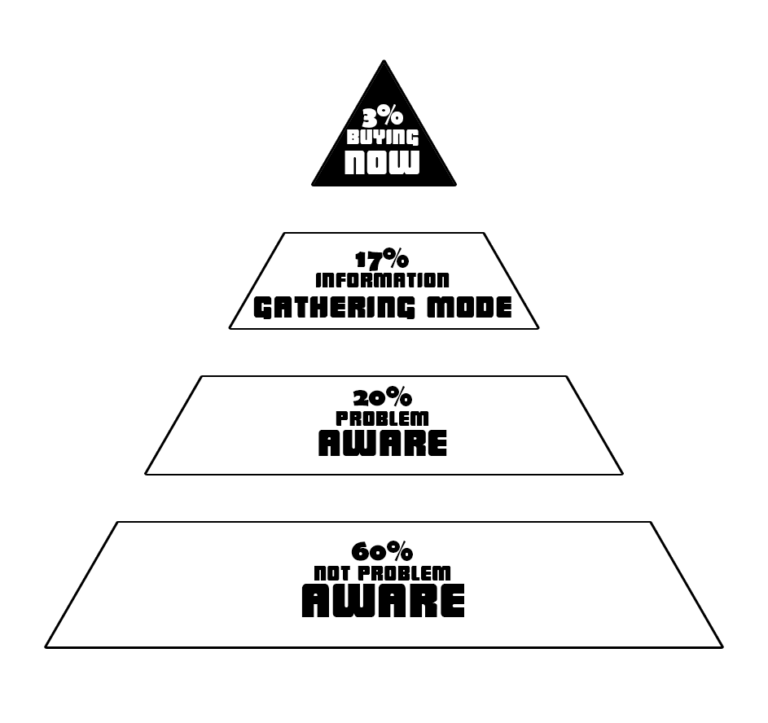Key Secret to Customers Buying Behaviour for Success
The biggest mistake that a lot of struggling founders go through is simply not understanding customers buying behaviour and how to target them effectively.
Your dream buyers are the customers who are most likely to buy from you, and by understanding their needs, wants, and motivations, you can create marketing and sales strategies that are tailored specifically to them. By focusing on your dream buyers, you can increase your sales and grow your business more effectively than if you were trying to appeal to a general audience. A good example of this is my good friend Samantha. She owns an online clothing store but was struggling to attract customers. So, we did a little market research and found that her dream buyers were young, fashionable professionals who value high-quality, handmade clothing and were enthusiastic in supporting small businesses. So, she refocused her marketing efforts on these findings and saw her sales skyrocket. Understanding her dream buyers helped Samantha grow her business and achieve success in less than a year.
Whether you’re just starting out or you’ve been in business for a while, it’s never too late to get to know your dream buyers and use that knowledge to drive your sales and achieve success.

Unfortunately, most businesses fail to understand their customers. Their mistake is to only collect rudimentary data like gender, data and even location.
Do you think this captures their customers fears, hopes, wishes, and dreams?
Didn’t think so…
You need to move beyond the obvious, and figure out how your audience thinks, feels, and acts. Knowing your dream buyers intimately can make the difference between winning and losing.
So, “How would you identify your dream buyer”?
Let’s get acquainted with Pareto’s principle of the 80/20 rule.
It’s a business and economics concept that states that roughly 80% of effects come from 20% of causes. In other words, a small number of factors tend to drive majority of the results. This principle can be used to identify and prioritize the most important factors, such as identifying the most valuable customers in a business.
But let’s take it a step further. Let’s focus on the top 20% of that 20%, which calculates to be 4%. This small group of power users will represent 64% of your sales (Calculated by 80% of 80%). Meaning you can hone-in, on those 4% of customers, and just find more customers like them.
Once you find your 4%, you’ll want to learn everything about them. Not just the usual stuff like age, gender, location, education level, what products/services they asked about, and what channels they used to find you.
You’ll need to dig in deeper, much deeper.
You start by thinking of two keywords, that you think people will use to search for your product or services.
Use tools like:
- Google (blogs)
- Linkedin (forums)
- Youtube (comments section)
- Amazon (reviews)
- Reddit (discussions)
- Quora (questions)
- Social media (facebook, twitter, Instagram)
- Any place that your audience hangs out or spends time on
To effectively understand your customers, it’s important to pay attention to both their words and emotions. Look for patterns in what they’re satisfied and dissatisfied with, as well as any concerns they may have. Observe the language they use when discussing existing products or services in your market. Identify any gaps or unmet needs and use this information to gain insights into your customers’ desires and requirements. Make sure you jot these down.
Use Answerthepublic.com – The best kept secret in the sales and marketing industry
This is a tool that allows businesses to gain insight into their customers’ thoughts and questions, by generating a diagram of related searches for a given keyword or phrase. The tool provides a wealth of data from marketers, offering a wealth of information about what customers are thinking and the issues they are struggling with. It’s a valuable source of research for modern marketers and can help businesses understand the questions that are important to their customers.
Let’s use ‘women’s clothing’ as an example for an online clothing store. If we start to search for this keyword, this tool will spit out all the questions people have related to this query:
An example of these results:
- Why women’s clothing doesn’t have pockets
- Why are women’s clothes so expensive
- Why are women’s clothes so revealing
- Why do women’s clothes feel so good

Other good places to check out is Facebook groups/pages, Reddit threads and Quora questions.
To succeed in today’s market, businesses need to focus on a specific group of customers, rather than trying to address the problems of everyone. With the media landscape being so fragmented, it’s important to identify your dream buyer and tailor your efforts to meet their needs.
This changes everything – your product and service offering, your marketing strategy, your strategical positioning, pricing and even the tone of your copy..
Failing to properly identify and understand your dream buyers can lead to wasted time and resources, delaying the growth and profitability of your business. On the other hand, taking the time to carefully consider and understand the needs, wants, and motivations of your ideal customers can greatly improve the success of your business, leading to increased sales and profitability.
Action Points:
- Identify the 20% of customers that make up 80% of your sales, and then the 4% of power users
- Find out:
- Where they hang out and congregate
- Where they get their information
- What are their biggest frustration and challenges
- Their hopes, dreams and desires
- Their biggest fears
- Preferred way to communicate
- Phrases, exact language they use
- What their typical day looks like
- What brings them joy and happiness
- Organize your findings
- Create you dream buyer
If you liked this article and want to stay informed about my future content, follow me on Twitter @RommelAsuit and also checkout my short-form content for more.




